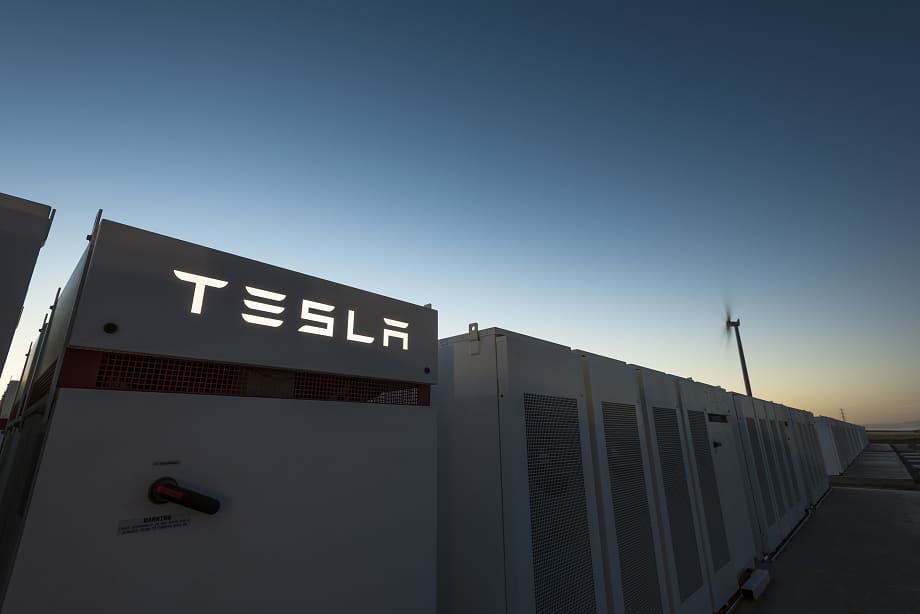Tesla’s lead in batteries will last through decade while GM closes in

Timothy Artman | Tesla Motors, Inc.
Tesla holds a sizable lead over competitors when it comes to paying less for lithium-battery cells and having the lowest cost EV battery packs, according to a new report from Cairn Energy Research Advisors.
What’s more, Tesla is expected to continue having the lowest costs in the EV industry through the end of this decade, with General Motors closing the gap, Cairn ERA said.
“Tesla is definitely putting the hammer down on the accelerator pedal. They see this as the crucial period and they’re building out their capacities,” said Sam Jaffe, managing director of Cairn ERA. “Look at what they’re doing in Shanghai and in Berlin and now in Austin, Texas. They’re just piling factory upon factory.”
Jaffe, who tracks the battery and EV industry, says Tesla’s advantage stems not only from the scale of its operations, but also from Elon Musk’s relentless pursuit of lower battery costs. Battery packs are the biggest expense in manufacturing electric vehicles and are the primary reason the average transaction price for electric vehicles sold in February was $53,392 versus $40,472 for all new vehicles, according auto website Edmunds.
According to Cairn ERA, Tesla pays an average of $142 per kilowatt hour (kWh) for battery cells purchased from its three suppliers: Panasonic, LG Chem and CATL. By comparison, GM pays an average of $169 per kWh for its battery cells while the industry average runs at about $186 per kWh. Paying far less than other automakers for lithium-ion battery cells allows Tesla to also lead the industry in the cost to manufacture EV battery packs. Cairns data estimates that Tesla’s battery packs cost, on average, $187 per kWh while GM’s packs cost $207 per kWh and the auto industry spends an average of $246 per kWh for battery packs.
Jaffe says Tesla’s battery packs are 10% less expensive than GM’s and 24% less than the rest of the auto industry because Elon Musk and his team have aggressively pushed to cut costs over the last decade. “Everything is focused on cost. The lower the cost, the more affordable the cars become,” he said.
Tesla didn’t return a request for comment on Cairn ERA’s cost calculations. At Tesla’s Battery Day last September, Musk showed advancements in cell design he said could lower battery costs by 54%. During the event Musk said, “One of the things that troubles me the most is that we don’t yet have a truly affordable car.”
While Cairn ERA’s research predicts Tesla will remain the cost leader in battery cells and EV battery packs through 2030, it also predicts GM will reduce that gap and get close to price parity with Tesla by the end of the decade. Jaffe says GM’s ability to catch Tesla is a reflection of the automakers decision to go all-in on electric vehicles.
“GM is fully committed and is taking this complete integrative approach which is going to allow it to be very close to Tesla, although the scale still isn’t in the same ballpark as what Tesla is planning,” said Jaffe.
GM plans to invest $22 billion through 2025 developing its EV program, which includes rolling out the all-electric Cadillac Lyriq later this year. Next year, a battery plant operated by GM and LG Chem will open outside Lordstown, Ohio. As that facility ramps up production of Ultium battery packs, GM is expected to steadily lower its EV costs. When asked about the Cairn ERA cost projections, GM spokesperson Jim Cain said, “We intend to be the industry benchmark and we look forward to reading the report.”
The big challenge for many automakers will be catching up to Tesla and GM on EV costs. Jaffe says some automakers like Volkswagen are making the investments needed to close the gap, but many others have not.
As EV sales rise over the next decade, Jaffe believes some automakers will not have the size or cost efficiencies to truly compete. In particular, Jaffe questions whether Japanese automakers have been too slow to fully embrace going electric.
“They’ve been digging a hole for themselves by being so reluctant,” he said. “Being dragged kicking and screaming towards this end game of electric vehicles has really hurt them. “
CNBC’s Meghan Reeder contributed to this report




